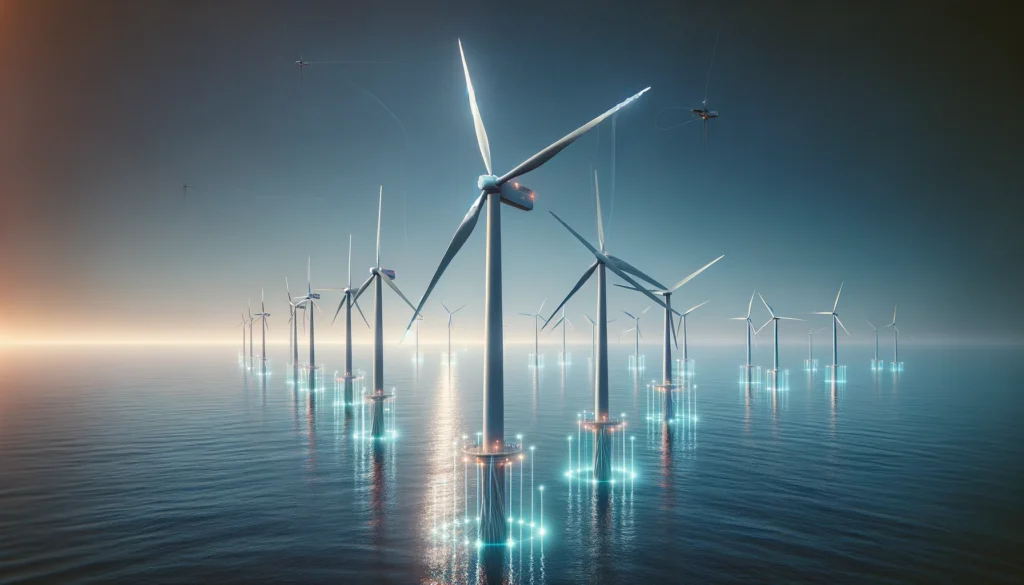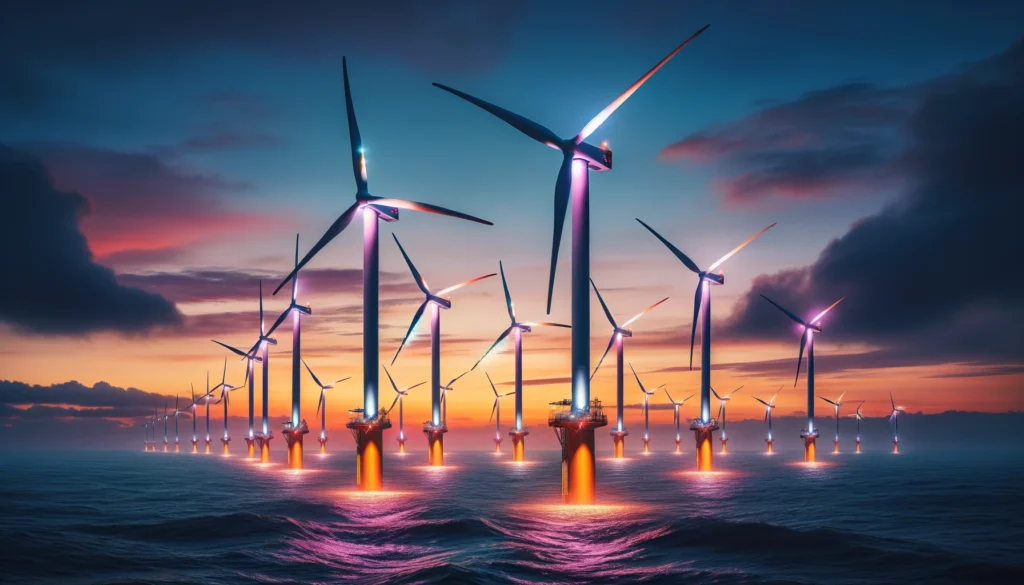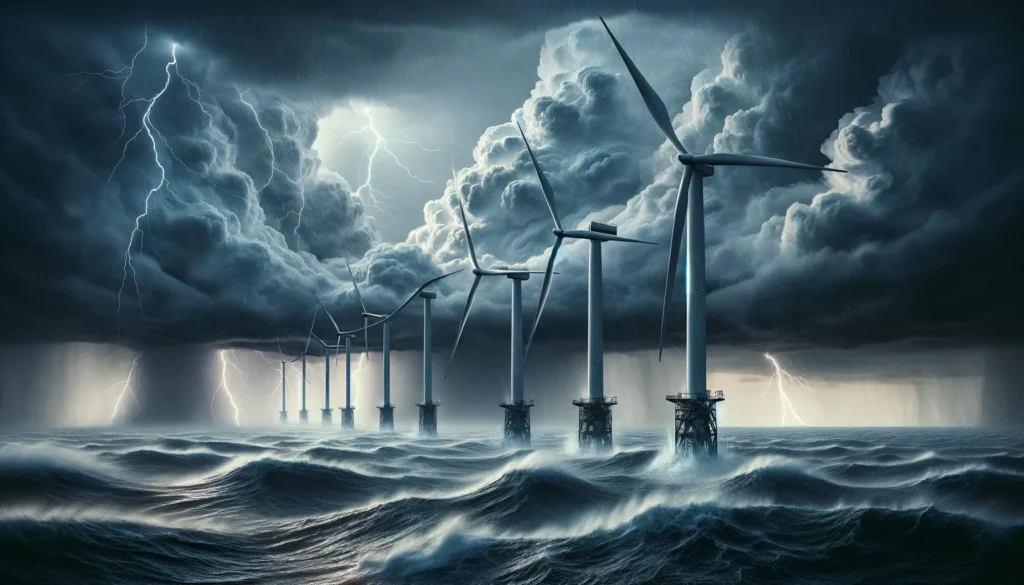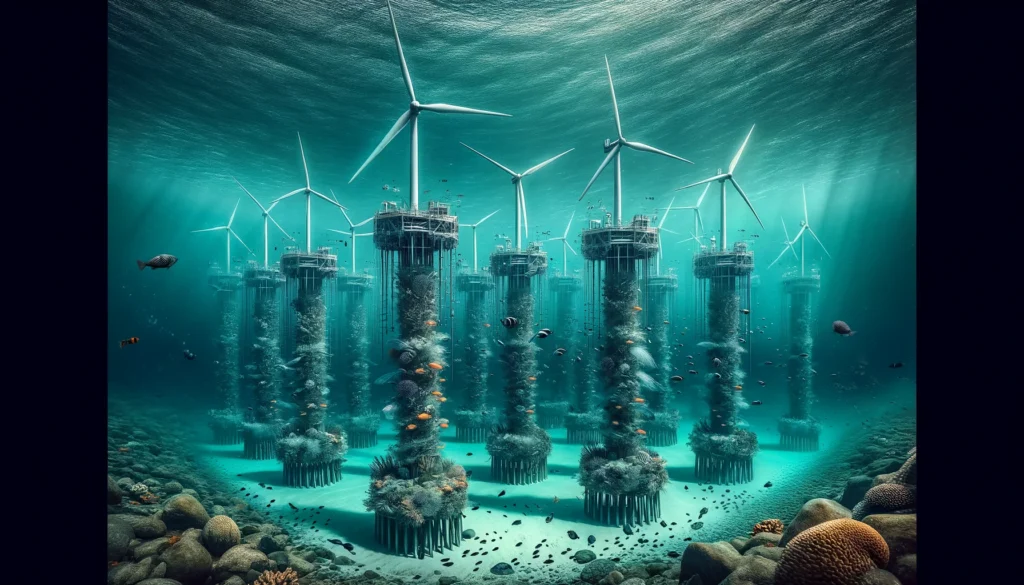Offshore wind energy has emerged as a promising solution in the global pursuit of renewable energy sources. As the world grapples with the urgent need to mitigate climate change, the development of offshore wind farms has gained momentum. Central to this momentum are the advancements in offshore wind turbine technology, which continue to push the boundaries of efficiency, reliability, and sustainability.
Table Of Content
We invite you to read: “The Power of Rotation: Vertical Axis Wind Turbines Explained”

Evolution of Offshore Wind Turbines
The journey of offshore wind turbines began with relatively small-scale installations close to shore. However, as technology advanced and challenges were overcome, developers began venturing further offshore into deeper waters where wind resources are often stronger and more consistent.
Early offshore wind turbines were typically fixed to the seabed using monopile or jacket foundations. While effective, these designs posed limitations in deeper waters and harsher marine environments. To overcome these challenges, floating wind turbines have been developed, opening up vast expanses of previously untapped offshore wind potential.
Key Technological Advancements
1. Floating Foundation Technology
Floating wind turbines utilize innovative floating platforms that allow turbines to be deployed in deep waters where traditional fixed foundations are impractical. Various designs, including semi-submersible and tension leg platforms, have been developed, each offering distinct advantages in different conditions.
2. Advanced Materials and Manufacturing
The use of advanced materials such as carbon fiber composites and novel manufacturing techniques has led to lighter, stronger turbine components. This not only reduces material costs but also enables larger turbines with higher hub heights and rotor diameters, capturing more wind energy and increasing overall efficiency.
3. Smart Monitoring and Maintenance Systems
Real-time monitoring systems equipped with sensors and data analytics enable proactive maintenance, reducing downtime and optimizing performance. Predictive maintenance algorithms can anticipate component failures before they occur, minimizing the need for costly and disruptive repairs.
4. Increased Efficiency through Aerodynamics
Continual improvements in aerodynamic design, including blade shape and pitch control systems, have enhanced turbine efficiency. Turbines can now capture more energy from the wind while minimizing turbulence and noise, resulting in higher electricity yields.
5. Grid Integration and Energy Storage
Advancements in grid integration technologies facilitate the seamless integration of offshore wind power into existing electrical grids. Energy storage solutions, such as batteries and pumped hydro storage, help mitigate intermittency issues by storing excess energy during periods of high production for use when demand is elevated.
We invite you to read: “Wind Turbine Blade Technology: Designing for Efficiency”

Future Directions
Looking ahead, the trajectory of offshore wind turbine technology points towards even greater advancements:
1. Floating Wind Farms
The development of larger floating wind farms in deep waters holds the potential to unlock vast amounts of offshore wind resources previously considered inaccessible.
2. Hybrid Energy Systems
Integration with other renewable energy sources, such as solar and wave power, offers the possibility of creating hybrid energy systems that provide a more stable and consistent power supply.
3. Offshore Wind Turbine Innovation
Ongoing research into novel turbine designs, such as vertical axis turbines and multi-rotor configurations, could further improve efficiency and reduce costs.
4. Environmental Considerations
Continued focus on minimizing the environmental impact of offshore wind farms through measures such as habitat restoration and wildlife monitoring will be paramount in ensuring sustainable development.
5. Global Expansion
The expansion of offshore wind farms beyond traditional strongholds such as Europe, to regions like Asia, North America, and emerging markets, presents opportunities for technology transfer and international collaboration.
We invite you to read: “The Science of Wind Energy: How Turbines Convert Air into Electricity”

Conclusion
Advancements in offshore wind turbine technology have transformed the renewable energy landscape, making offshore wind a viable and increasingly competitive source of clean electricity. As innovation continues to drive progress in this field, the future holds great promise for further improving efficiency, reducing costs, and accelerating the transition towards a more sustainable energy future.
FAQs
How do offshore wind turbines differ from onshore ones?
Offshore wind turbines are typically larger and installed in deeper waters compared to onshore turbines. They often utilize floating foundations and advanced materials to withstand marine conditions.
What are the key advancements in offshore wind turbine technology?
Key advancements include floating foundation technology, advanced materials and manufacturing techniques, smart monitoring and maintenance systems, increased aerodynamic efficiency, and improved grid integration and energy storage solutions.
What are the benefits of offshore wind energy?
Offshore wind energy offers significant benefits, including access to stronger and more consistent wind resources, reduced visual impact compared to onshore wind farms, and the potential for large-scale electricity generation close to coastal population centers.
What are the challenges associated with offshore wind turbines?
Challenges include high initial investment costs, technical complexities related to installation and maintenance in marine environments, potential environmental impacts, and regulatory hurdles.
What does the future hold for offshore wind turbine technology?
The future of offshore wind turbine technology looks promising, with ongoing advancements expected to further improve efficiency, reduce costs, and expand the global reach of offshore wind energy.
You May Also Like
- Wind Turbine Safety: Protecting People and Birds
- Wind Turbines and Wildlife: Balancing Energy and Ecology
- Wind Power Myths vs. Facts: Separating Truth from Fiction
- Wind Turbines vs. Climate Change: A Powerful Ally in the Fight for Our Planet
- Winds of Change: How Wind Power is Transforming the Energy Landscape

